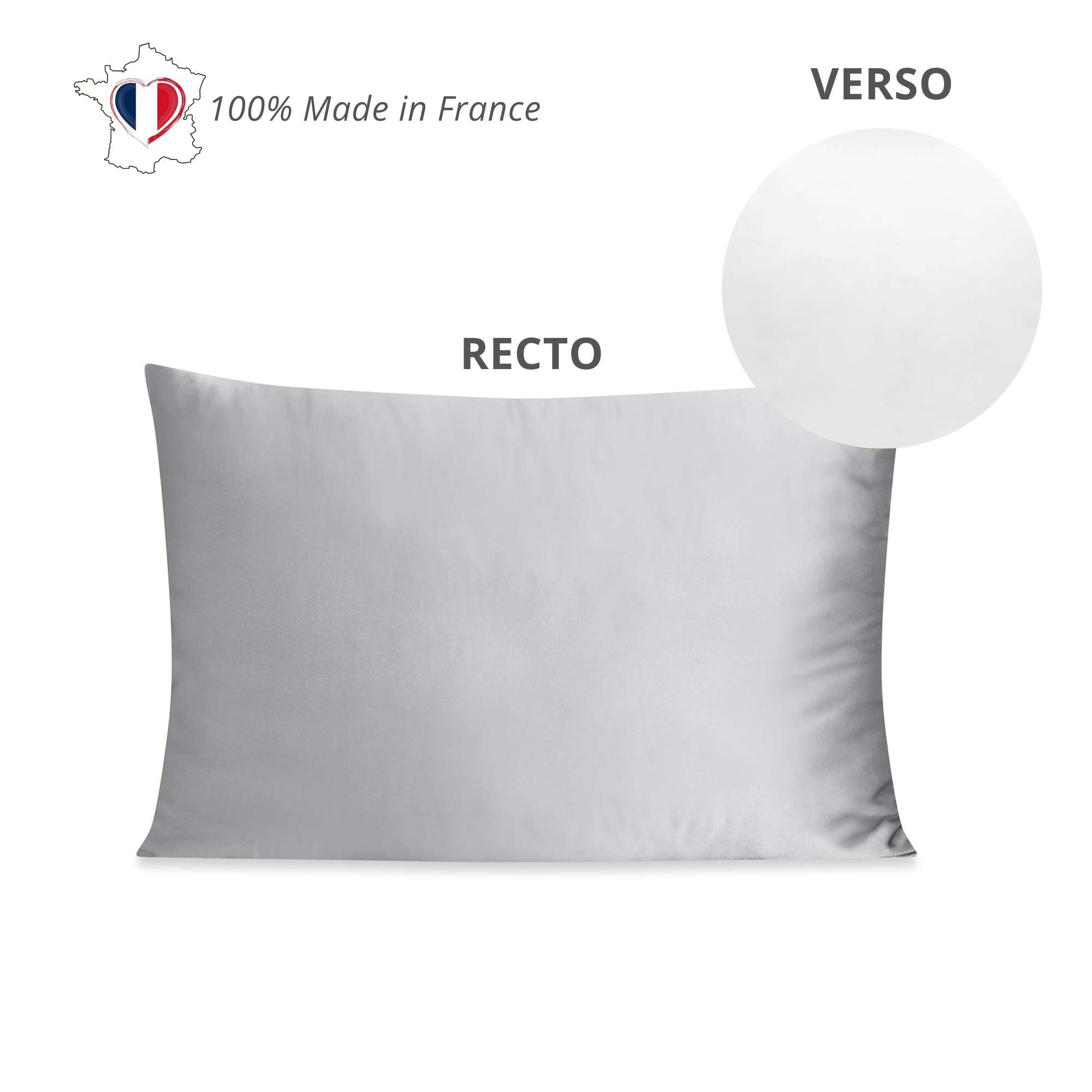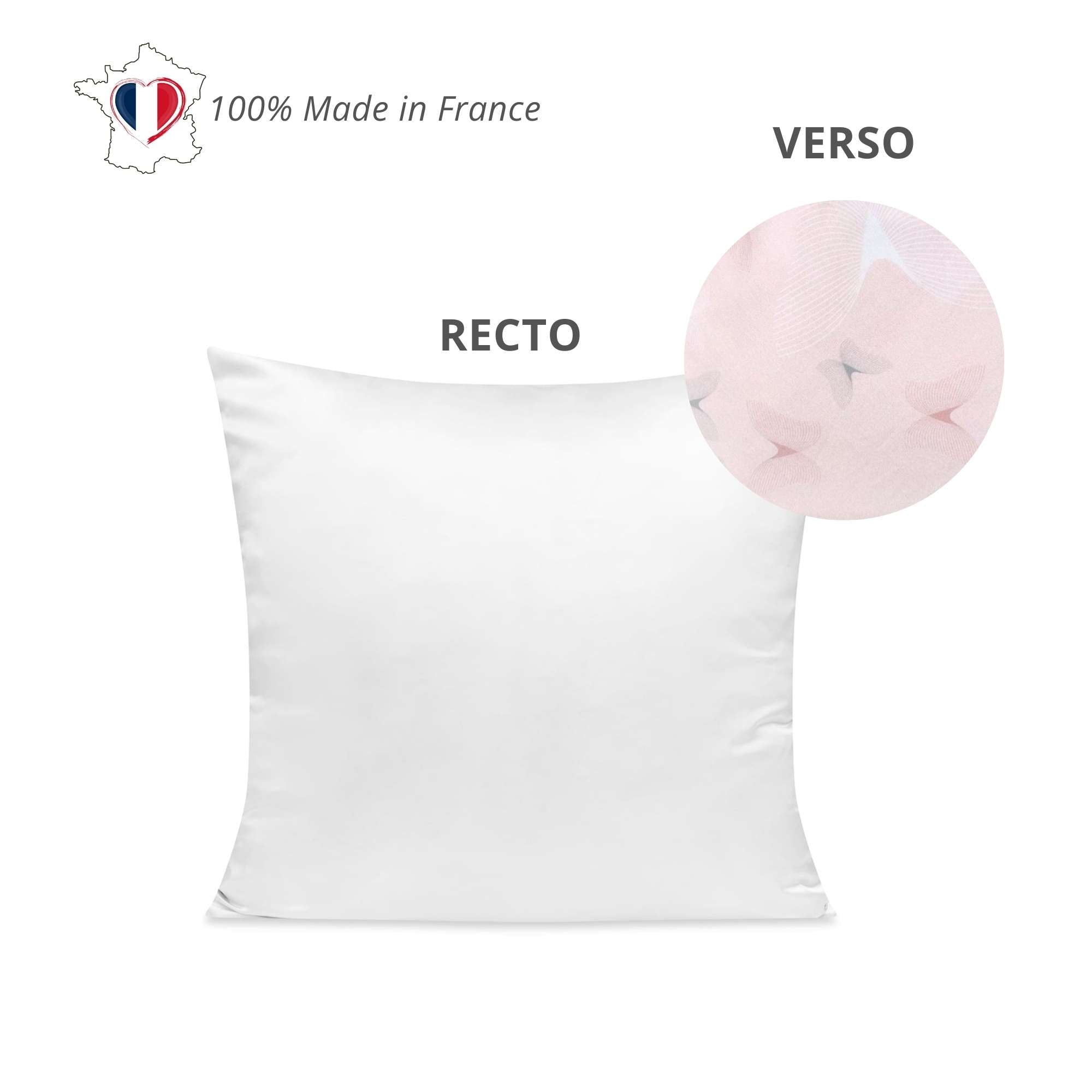
Silk: A High-End Natural Fiber
Silk is a natural fiber derived from the silkworm Bombyx Mori. Specifically, it is a natural protein polymer with a high molecular weight, composed of two proteins: fibroin and sericin. Fibroin makes up 70-80% of the silk fiber composition, while sericin accounts for 20-30% [1,2,3].
Fibroin is the structural core of the silk fiber and is responsible for its mechanical properties. It is a hydrophobic natural protein organized in beta sheets and primarily composed of hydrophobic amino acids such as glycine and alanine. This glycoprotein consists of two equimolar protein subunits: a heavy chain and a light chain linked by covalent disulfide bonds. Its semi-crystalline structure gives silk its rigidity and strength [1,2,3].
Fibroin is covered by sericin, a sticky protein that ensures the structural integrity of the fiber. Sericin is a hydrophilic protein that surrounds the fibroin fibers. It is mainly composed of 46% hydrophilic amino acids (serine, glycine, threonine, aspartic acid) and 43% polar amino acids, with the remainder being apolar amino acids. In reality, there are three forms of sericin, varying in composition from the most distant to the closest to fibroin. Sericin dissolves in water at 50-60°C and forms a gel when cooled. In textile applications, sericin is considered a waste product as it is removed to obtain the silk filament [1,2,3].
The Benefits of Silk for Skin and Hair
Silk is known for its numerous properties that benefit the skin and hair, including anti-aging, antioxidant, regenerative, healing, anti-inflammatory, antibacterial, and antimicrobial effects. Let's delve into the scientific studies that prove these virtues.
Studies on silk show that its two proteins, fibroin and sericin, complement each other to provide remarkable benefits for the skin and hair. However, sericin possesses specific properties for the skin.
Silk: Excellent Anti-Aging and Antioxidant Properties
In 1986, a study by Henne & Hoppe demonstrated that a cream containing sericin increased skin elasticity and showed anti-aging and anti-wrinkle effects [4]. Today, we can provide evidence that silk exhibits excellent anti-aging activities compared to market standards. It is anti-hyaluronidase, meaning it inhibits the activity of hyaluronidase, an enzyme involved in the degradation of hyaluronic acid in the skin. This offers anti-aging, hydrating, and nourishing properties. This study also shows that silk is anti-collagenase, as it inhibits the activity of collagenase, an enzyme involved in the degradation of collagen fibers in the skin. This reveals anti-aging, revitalizing, firming, and restructuring benefits.
More specifically, one of the two proteins in silk, sericin, is known for its anti-wrinkle properties, improvement of skin elasticity, and anti-aging effects [3]. A 2013 study demonstrated the anti-aging property of sericin through in vivo characterization using a fibroblast cell culture model. The results showed that sericin stimulates the synthesis of type I collagen and reduces cell death. Furthermore, sericin suppresses nitrite regulation, which can induce oxidative stress. The anti-aging properties of sericin are comparable to those of vitamin C, and it even surpasses vitamin C in terms of antioxidant properties [5].
Anti-Inflammatory Properties, Cell Regeneration and Healing
Silk exhibits excellent anti-inflammatory properties for the skin as it is anti-lipoxygenase. This means that it inhibits lipoxygenase, which is involved in the synthesis of inflammatory mediators, cell growth, and expression of growth factors. This promotes skin repair and soothes the skin.
Specifically, sericin has shown to promote cellular regeneration and healing [6]. A study by Sakamoto & Yamakishi in 2000 demonstrated that increasing the concentration of sericin in a cream from 0.001% to 30% enhances the cleansing properties of the cream while reducing skin irritation.
From a wound healing perspective, silk is highly effective. Sericin stimulates the expression of fibroblast growth factor, which triggers fibroblasts and myofibroblasts involved in healing. Additionally, fibroin contributes to wound healing by inducing fibroblast proliferation, allowing cellular regeneration. Studies by Hino et al. in 2006 and Padol et al. in 2012 demonstrate that treating wounds with a silk film increases collagen regeneration and reduces skin inflammation.
Furthermore, silk has been approved as a biomaterial by the Food and Drug Administration (FDA) in the United States. This means that it is biocompatible with the skin, causing no sensitization or irritation when applied topically. The study by Padol et al. in 2011 shows that due to its biocompatibility and resistance to infections, silk is an interesting coagulant material for wounds [4].

Silk: A Powerful Moisturizer for the Skin
Silk is known in the textile industry for its ability to maintain skin and hair hydration. A 2001 study by Yamada et al. revealed the moisturizing property of a lotion containing 1% sericin and 4% D-glucose [6].
Specifically, a 2005 study by Padamwar et al. highlighted the moisturizing properties of sericin, attributed to its amino acid composition and occlusive effect. Since sericin resembles the natural moisturizing factor (NMF), it is a promising cosmetic ingredient for its moisturizing effect. In this study, gels containing 1.5% to 2% sericin, 2.5% to 10% pluronic acid, and 0.05% to 0.2% carbopol were applied to the skin of volunteers. The hydroxyproline content of the skin and transepidermal water loss (water evaporation from the skin) were measured. This study proved the moisturizing effect of sericin as it increased the hydroxyproline content in the stratum corneum and hydration of the epidermal cells. Additionally, the occlusive effect of sericin helped reduce transepidermal water loss from the skin's upper layer. The topography of the skin's upper layer revealed softer skin following hydration [2,3,4].
A 2004 study by Daithankar et al. demonstrated the moisturizing efficacy of fibroin. Fibroin was incorporated in solution or cream at concentrations ranging from 1% to 5%. In vitro measurements and studies on volunteers proved that fibroin reduced transepidermal water loss. Moreover, fibroin increased hydroxyproline, which helps retain skin hydration and achieve soft and supple skin. Fibroin thus increased the hydration level in the stratum corneum, making it a promising natural moisturizing agent [8].
The Antimicrobial and Antibacterial Activity of Silk
Silk is recognized for its antimicrobial, antibacterial, and anti-acarid properties. A 2009 study demonstrated the antibacterial property of sericin [7]. Sericin significantly affects Gram-positive and Gram-negative bacteria at the cellular level. It has a true impact on the growth of these bacteria by inducing mutations in the membranes of Escherichia coli and Staphylococcus aureus bacteria. Sericin is thus an effective antibacterial agent [7].
The Absorbation Capacity of Silk
Silk powder has the ability to absorb moisture. A 2000 study by Kirikawa et al. showed that applying a film of powder composed of fibroin (70-95%) and sericin (5-30%) absorbed moisture from the skin. Additionally, a 1999 study by Miyashita revealed that silk powder absorbs sweat and sebum secreted by the skin's sebaceous glands [6].
Silk: A UV Protector
According to a 2001 study by Yoshioka et al., sericin possesses a UV protection effect. It improves the filtration of UV rays [6]. A 2003 study by Zhaorigetu et al. demonstrated the protective effect of sericin on UVB-induced lesions. Topical application of 5mg of sericin helped treat the intensity and surface area of sunburns on UVB-treated rats. This suggests that sericin has a photoprotective effect against sunburn lesions. Sericin could be a useful photo-preventive agent against UVB-induced damage, particularly by reducing oxidative stress and cell proliferation in the skin [9]. A study showed that including sericin in sunscreen formulations enhances the UV protection effect of sunscreen filters such as triazines and cinnamic acid esters [3].
Silk and its remarkable benefits for hair health
Silk reveals remarkable properties for hair care. In particular, sericin is an excellent hair conditioner with good cleansing properties. A 1987 study by Hata revealed that low molecular weight hydrolyzed sericin is an excellent hair conditioner [3,6]. Furthermore, a 1988 study by Engel & Hoppe highlighted that the presence of sericin and pelargonic acid in a shampoo aids in hair washing [6].
Moreover, sericin helps protect hair from damage, thanks to its antioxidant property. A 1984 study by Hoppe et al. showed that hair products containing 0.02% to 2% sericin and 0.01% to 1% olive oil reduce surface damage to the hair by binding sericin to the hair [3,4].
Silk: A Promising Future in Dermo-Cosmetic Care
Silk has numerous scientifically proven properties for the skin and hair. It is now a material of the future in both medicine and cosmetics. It shows promise in various areas such as anti-aging, hydration, and wound healing. Don't wait any longer, embrace silk to take care of your skin and hair!
Bibliography
[1] Bascou, R.; Hardouin, J.; Ben Mlouka MA; Guenin, E.; Nesterenko A. Detailed investigation on new chemical-free methods for silk sericin extraction. Materials Today Communications, 2022, 33, 104491.
[2] Padamwar MN; Pawar AP; Daithankar AV; Mahadik KR Silk sericin as a moisturizer: an in vivo study. Journal of Cosmetic Dermatology, 2005, 4, 250-257.
[3] Padamwar MN; Pawar AP Silk sericin and its applications: A review. Journal of Scientific & Industrial Research. Flight. 63, April 2004, pp 323-329.
[4] Joseph, B.; Raj, SJ Therapeutic Applications and Properties of Silk Proteins from Bombyx Mori. Frontiers in Life Science, 2012, 6, 55–60.
[5] Kitisin, T.; Maneekan, P.; Luplertlop N. In-vitro Characterization of Silk Sericin as an Anti-aging Agent. Journal of Agricultural Science, 2013, Vol. 5, No. 3.
[6] Barajas-Gamboa, JA; Serpa-Guerra, AM; Restrepo-Osorio, A.; Ã lvarez-López, C. Sericin Applications: A Globular Silk Protein. Engineering and competitiveness, 2016, 18, 193–206
[7] Senakoon, W.; Nuchadomrong, S.; Sirimungkararat, S.; Kitikoon, P. Antibacterial Action of Eri (Samia Ricini) Sericin against Escherichia Coli and Staphylococcus Aureus. 2009, 7.
[8] Daithankar, AV; Padamwar, MN; Pisal, SS; Paradkar, AR; Mahadik, KR Moisturizing efficiency of silk protein hydrolyzate: Silk fibroin. Indian Journal of Bikotechnology, vol 4, January 2005, pp 115-121.
[9] Zhaorigetu, S.; Yanaka, N.; Sasaki, M.; Watanabe, H.; Kato, N. Inhibitory effects of silk protein, sericin on UVB-induced acute damage and tumor promotion by reducing oxidative stress in the skin of hairless mouse. Journal of Photochemistry and Photobiology B: Biology 71 (2003) 11-17.





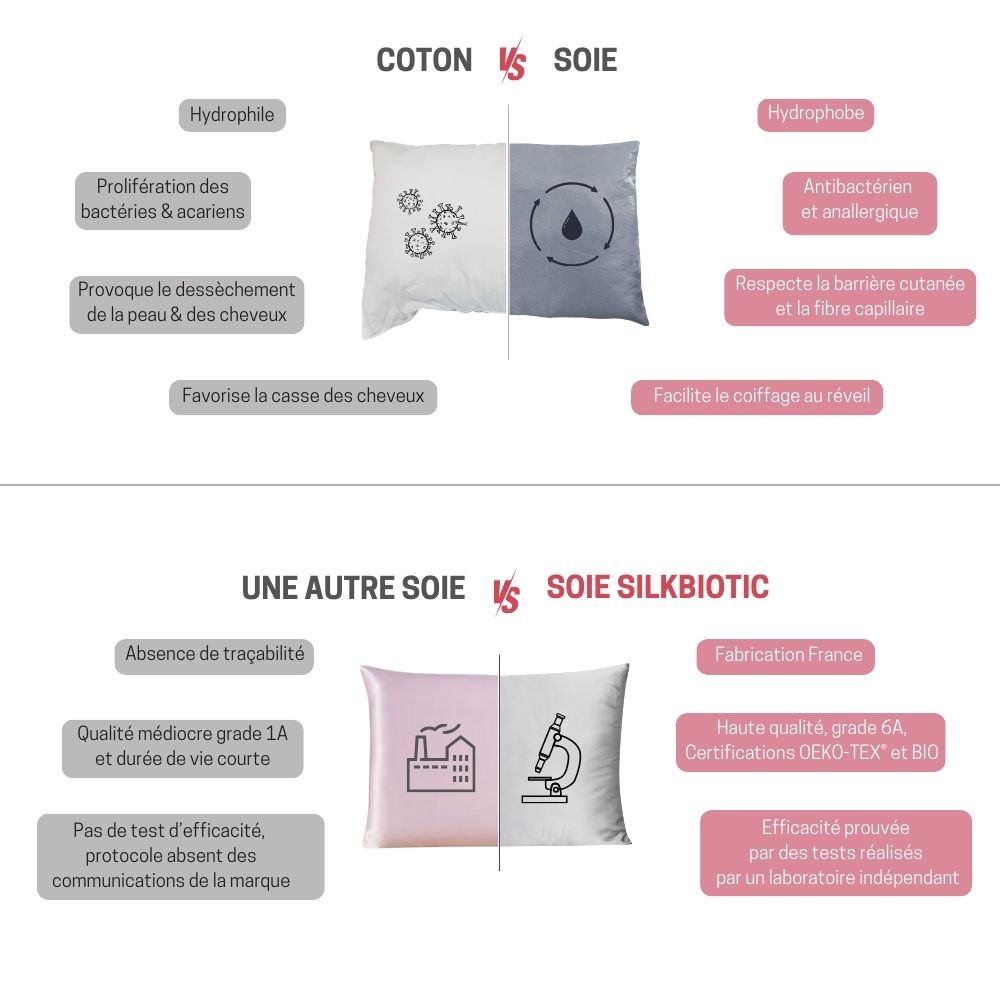
![Silk pillowcase – made in France – [6A grade silk] – SILKBIOTIC](http://silkbiotic.com/cdn/shop/files/preview_images/cc5bb5dd91684d7aa717c1ad36bcfe3b.thumbnail.0000000000.jpg?v=1743592147&width=1500)

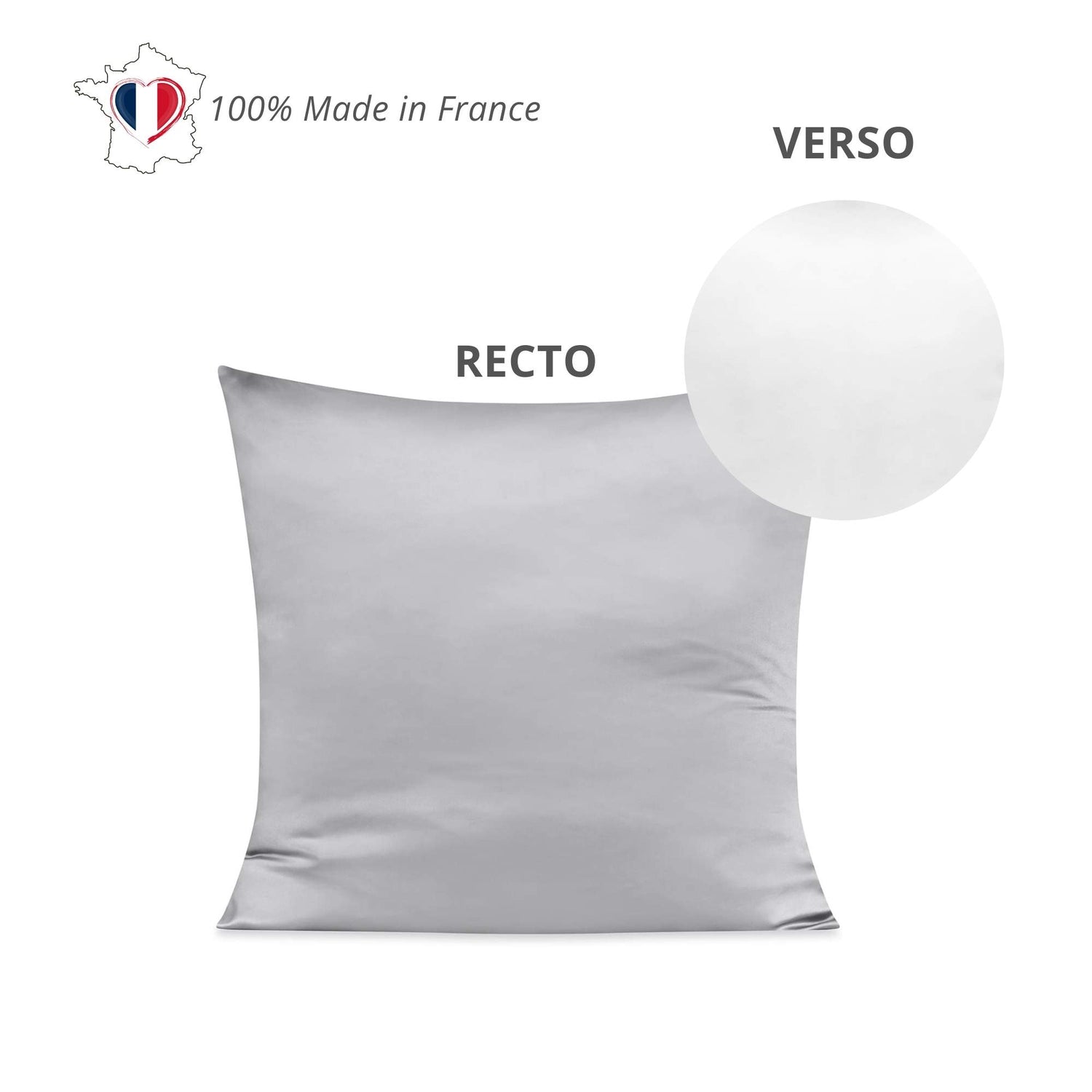
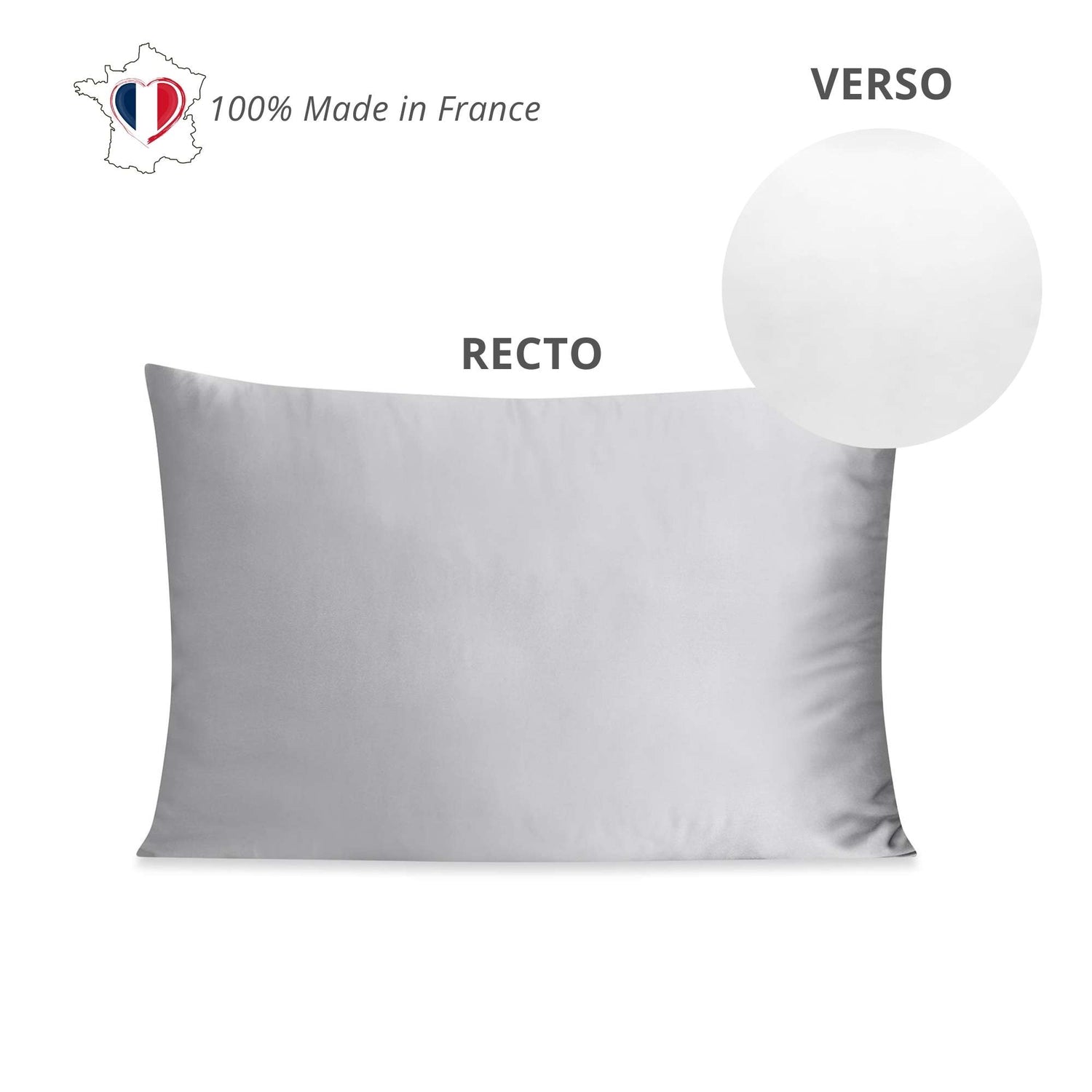

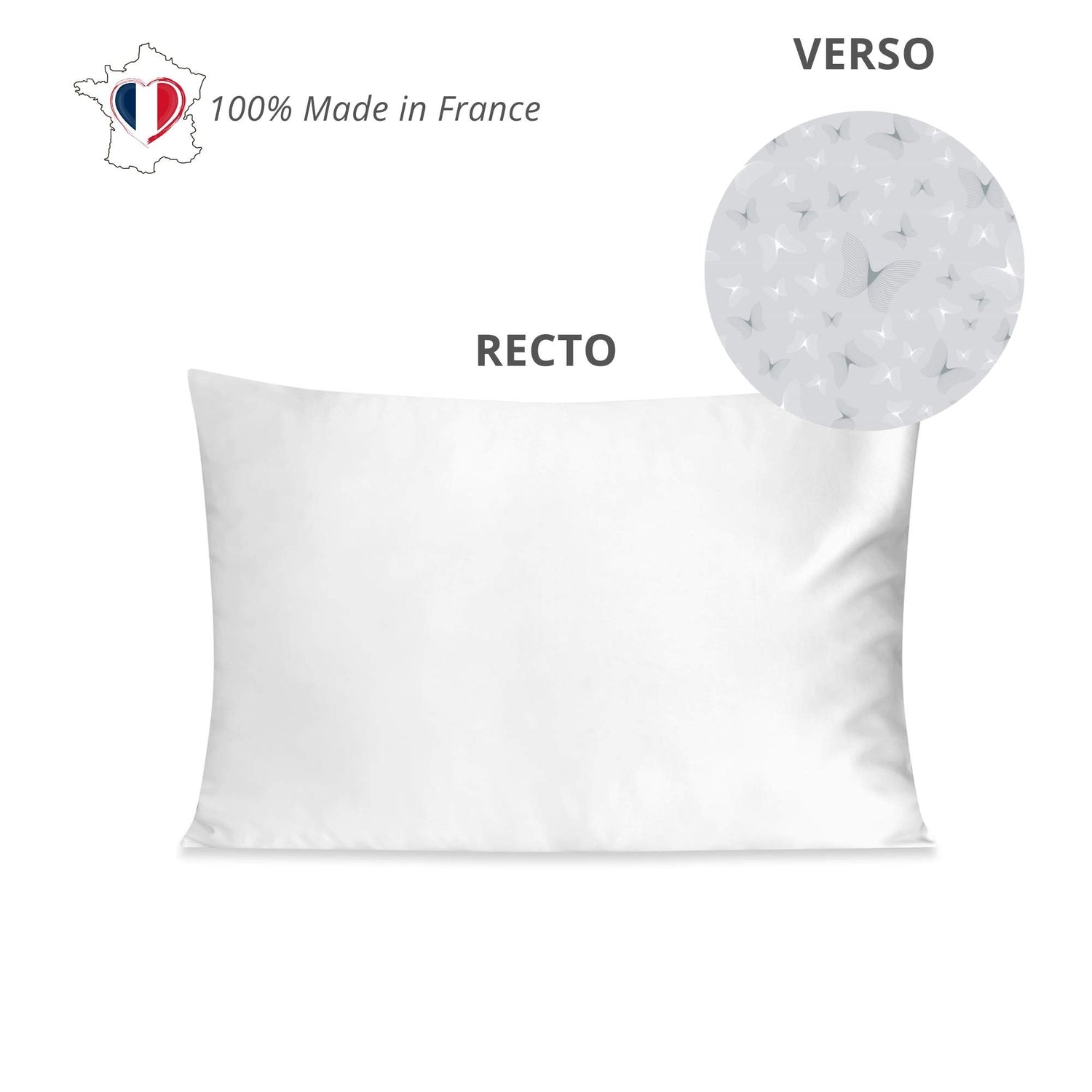
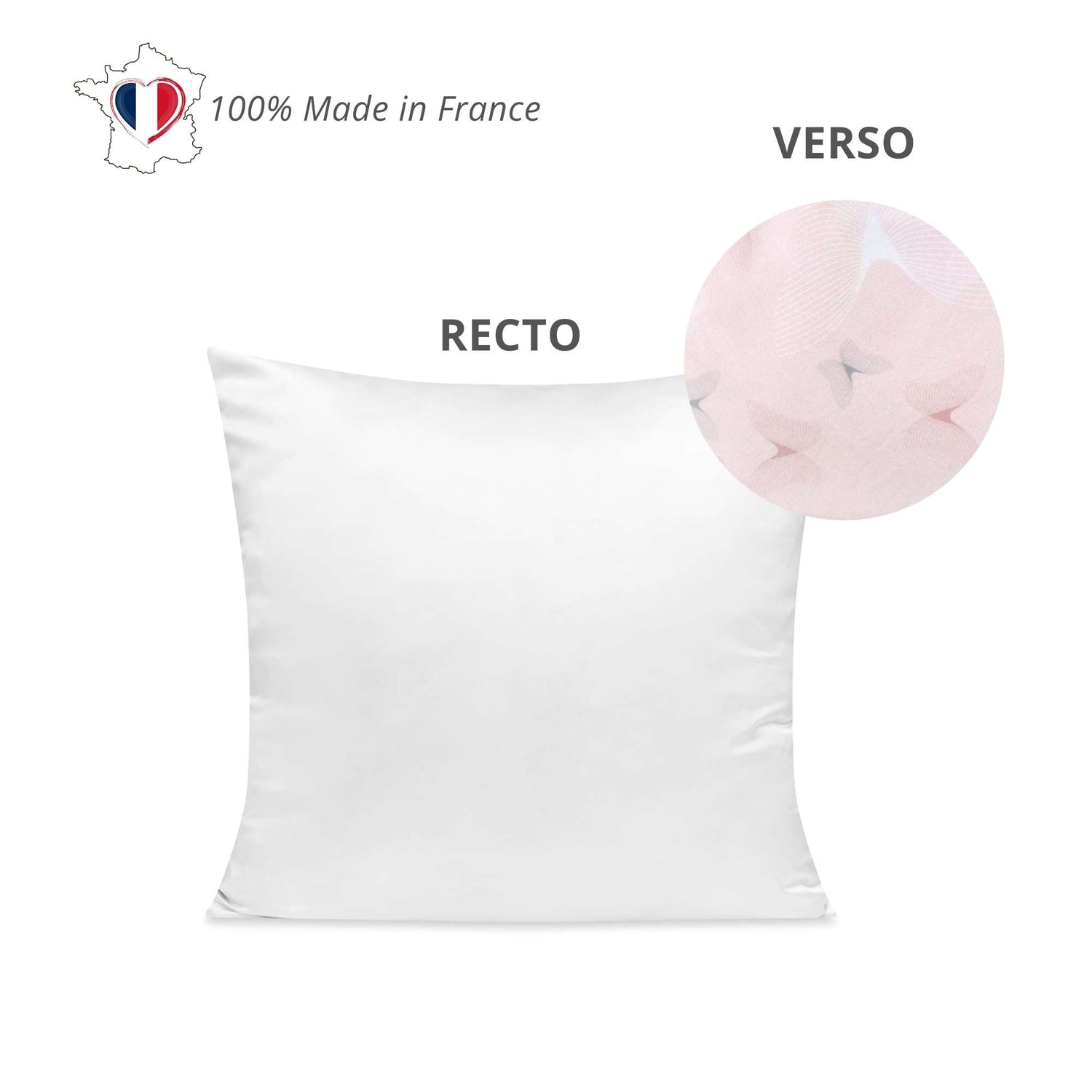





![Silk pillowcase – made in France – [6A grade silk] – SILKBIOTIC](http://silkbiotic.com/cdn/shop/files/preview_images/cc5bb5dd91684d7aa717c1ad36bcfe3b.thumbnail.0000000000.jpg?v=1743592147&width=3840)


